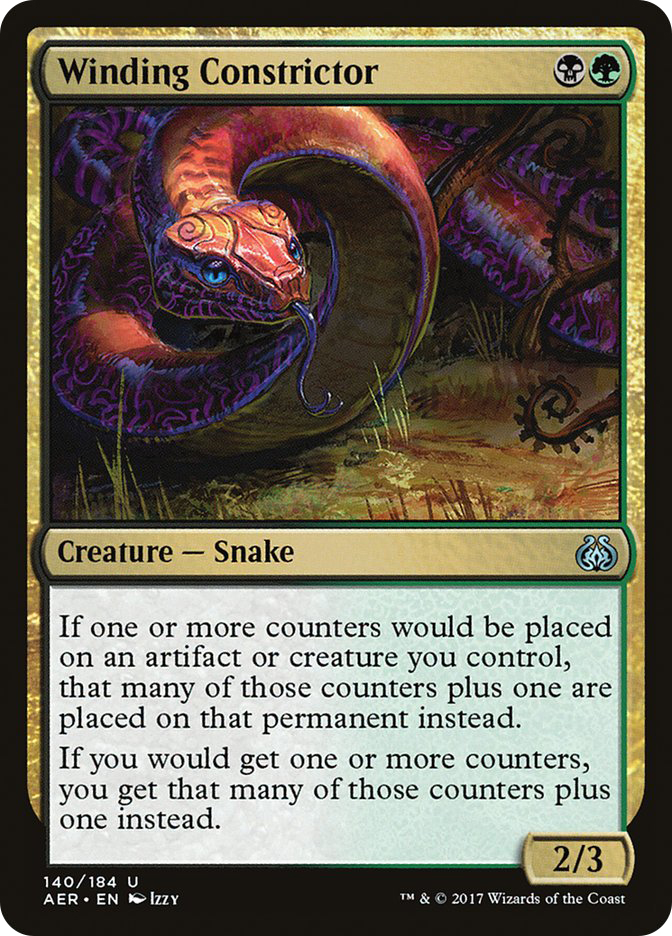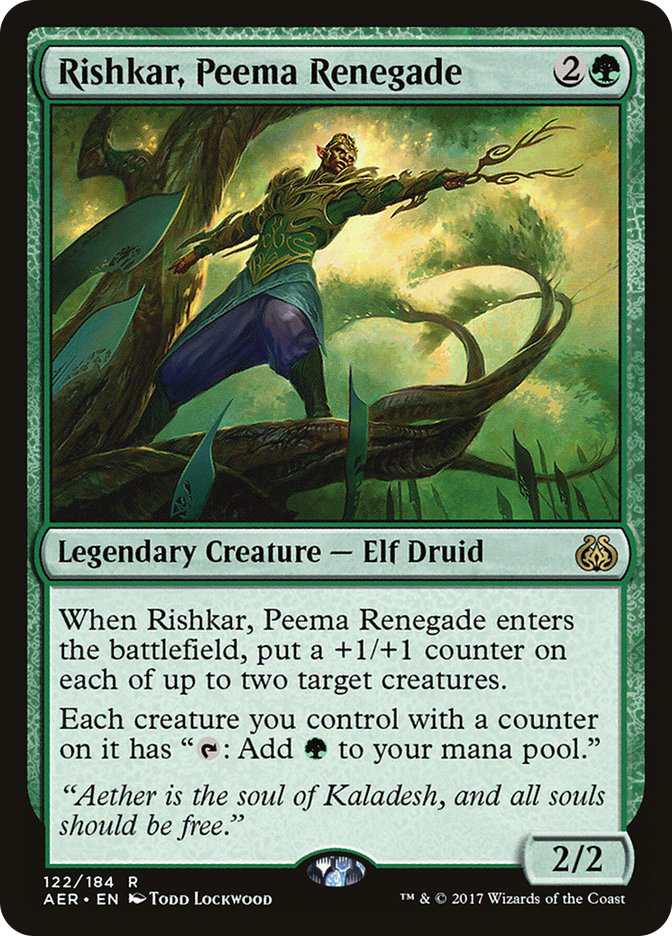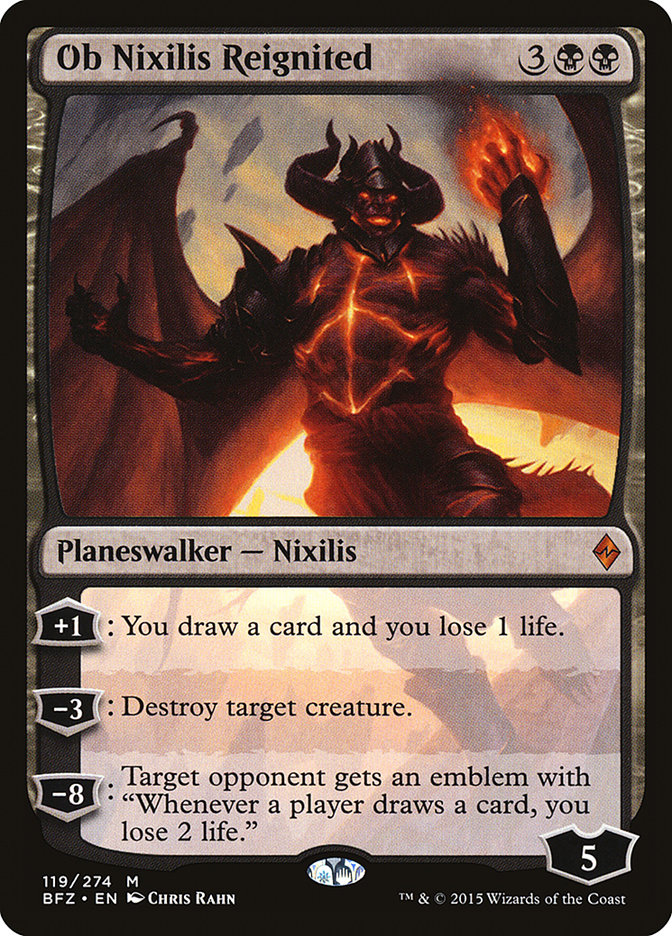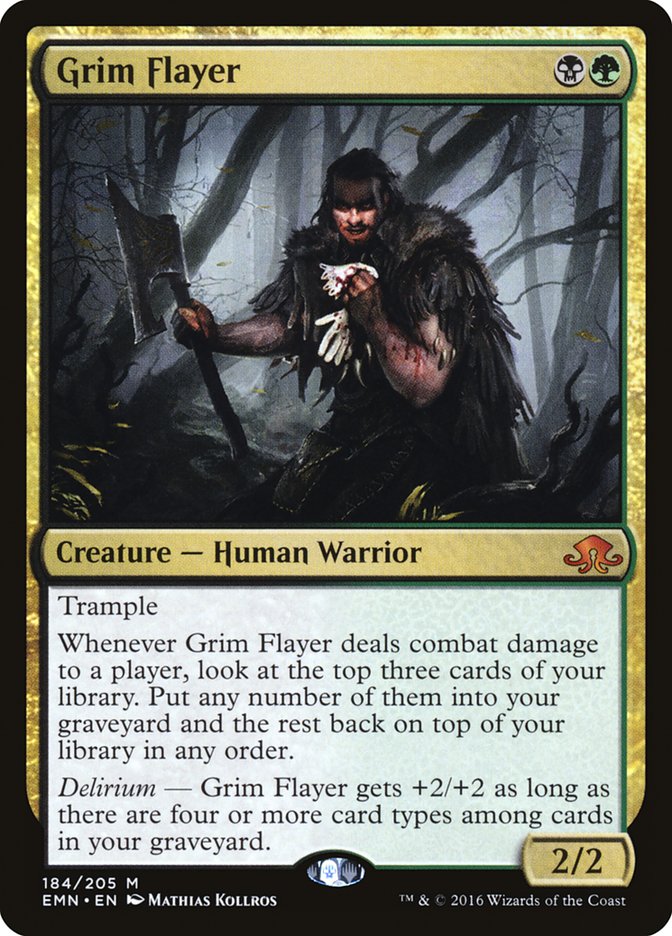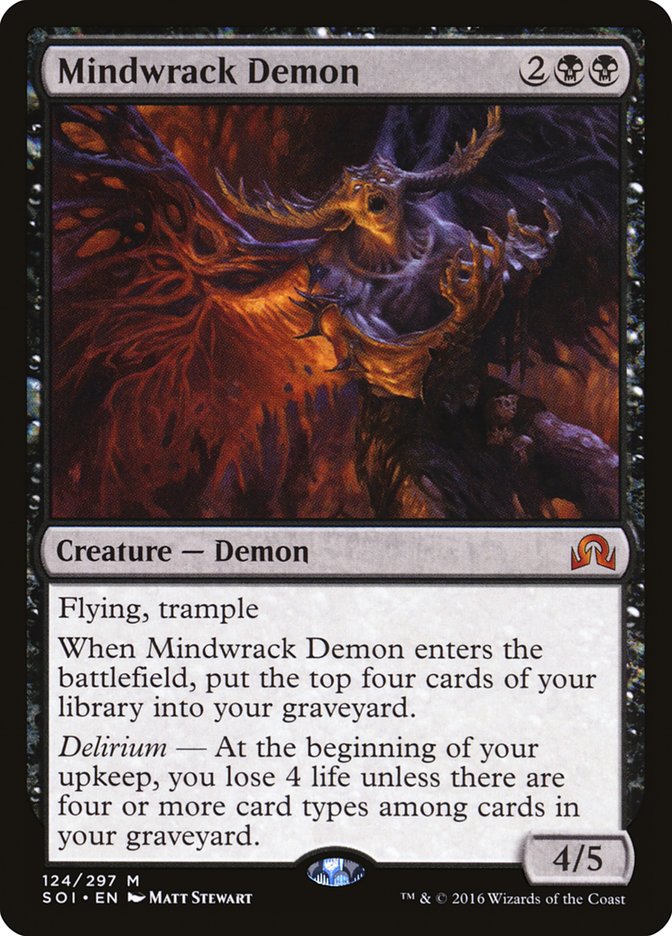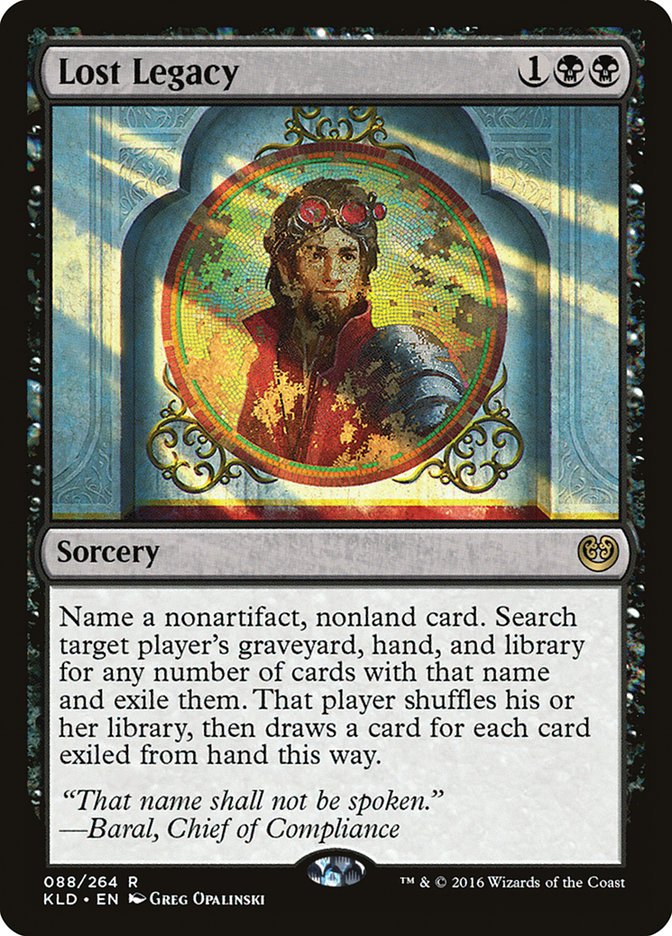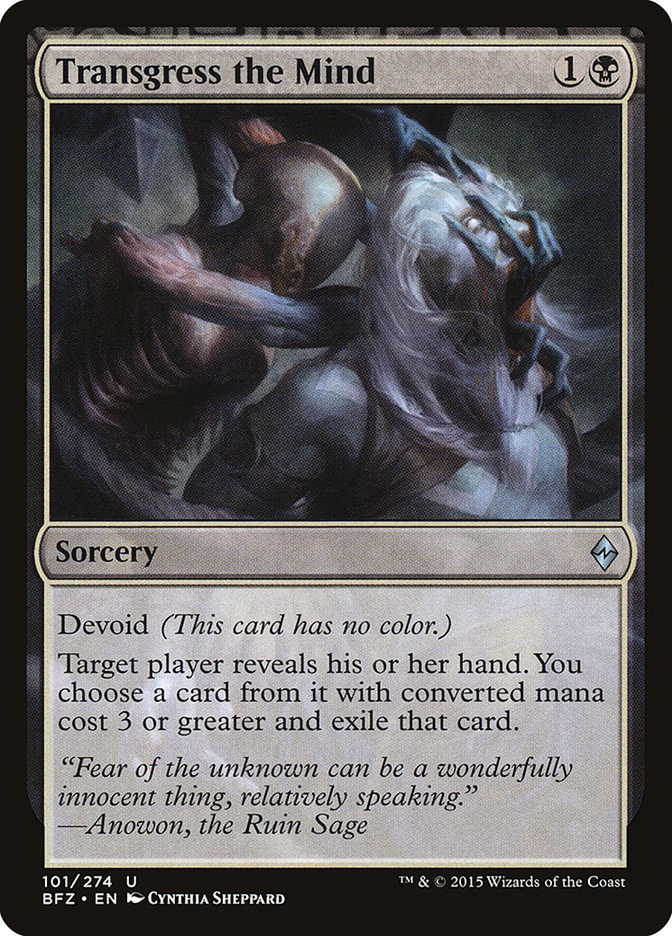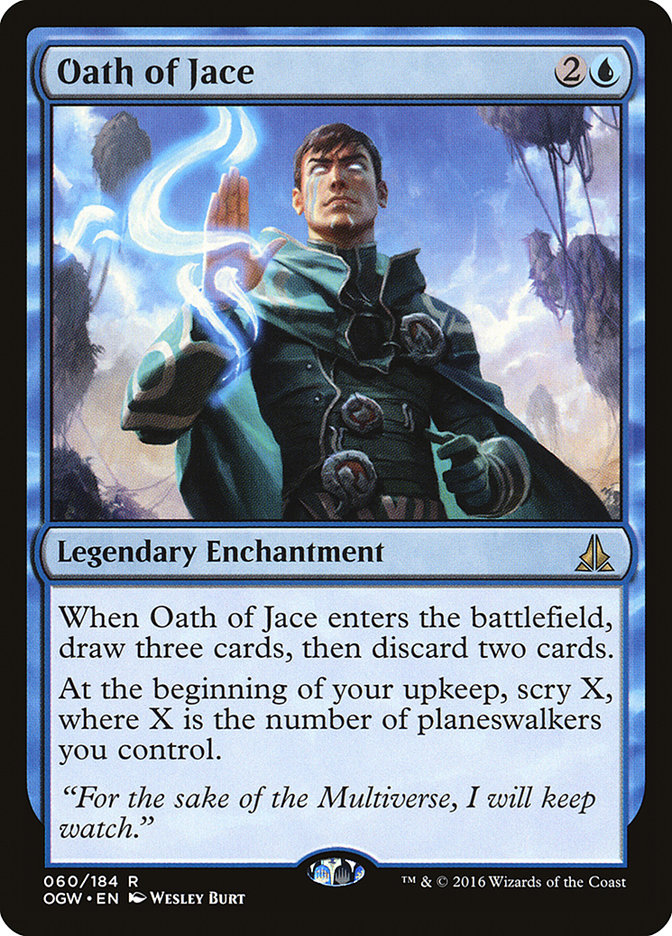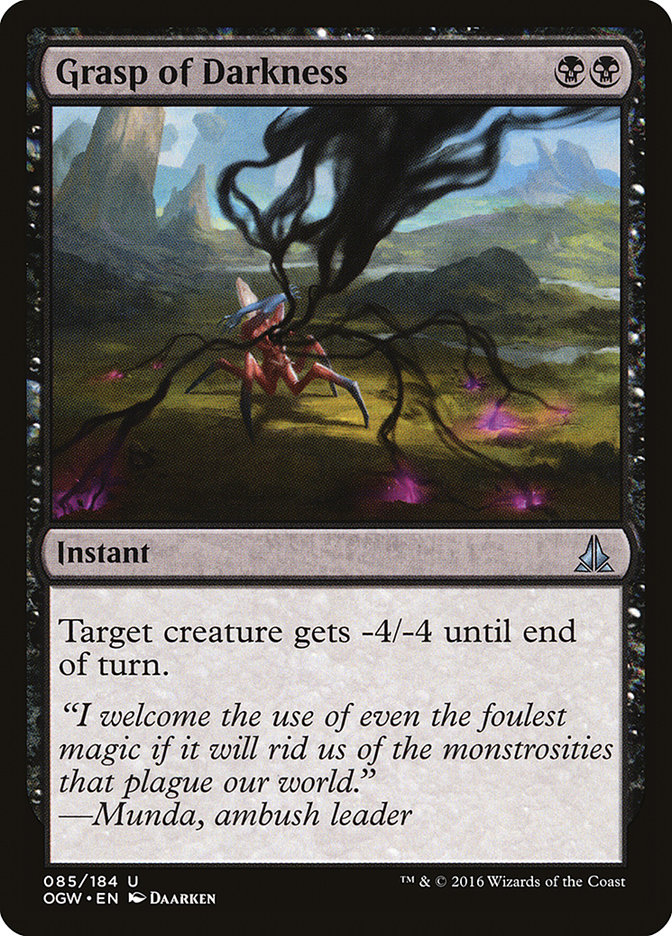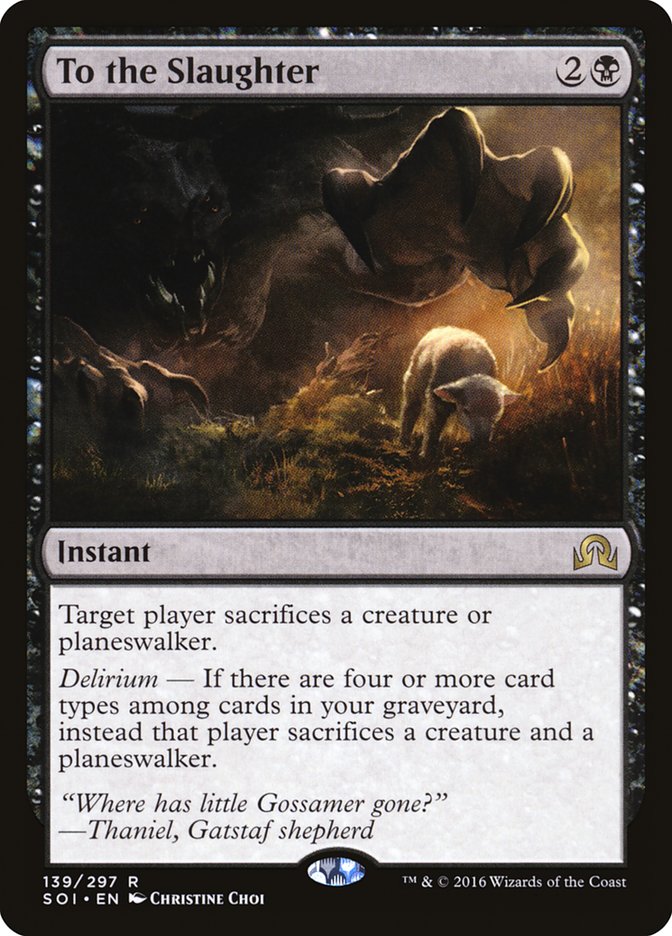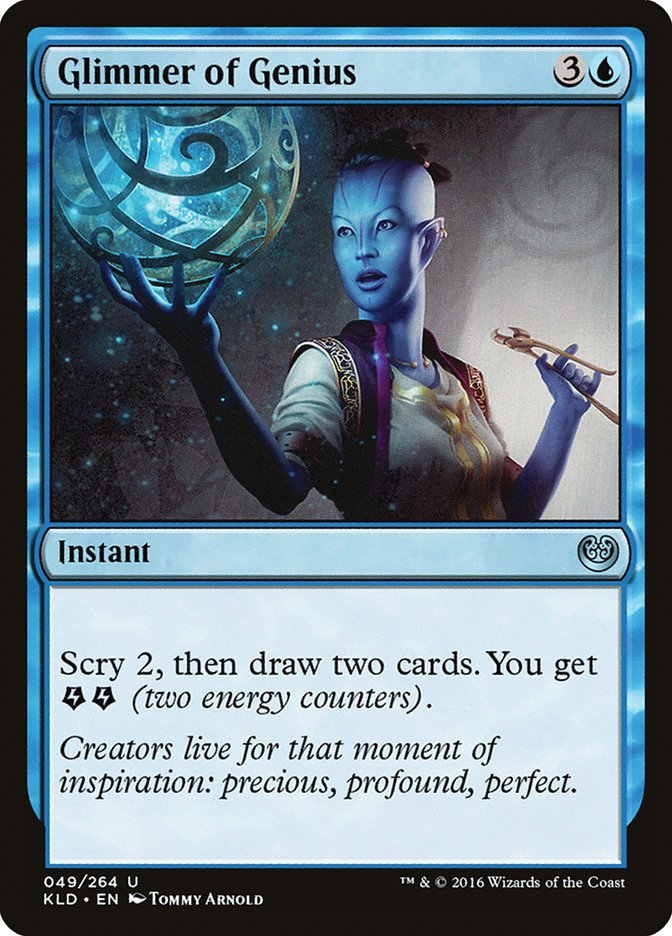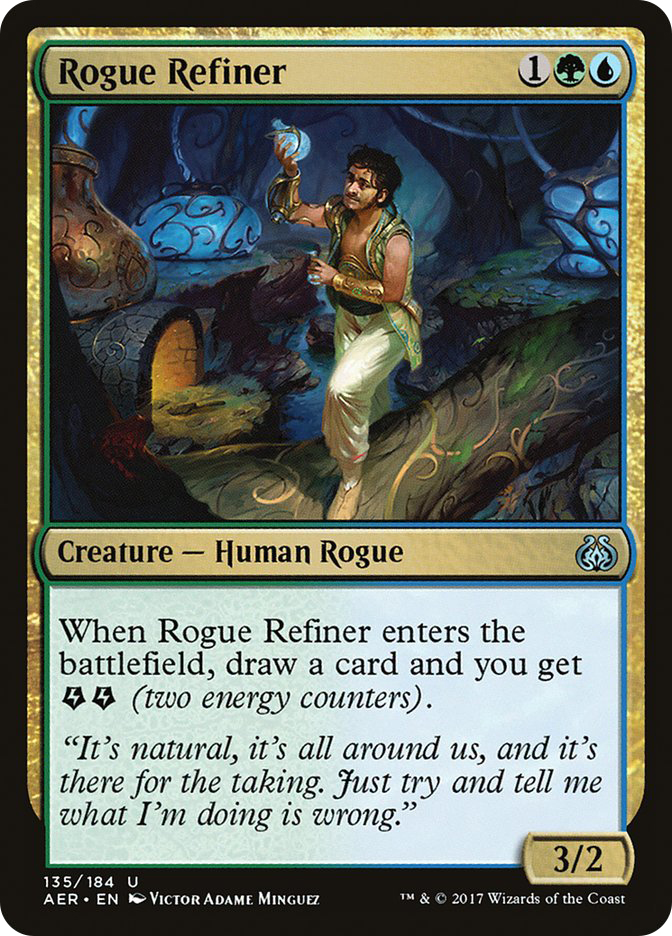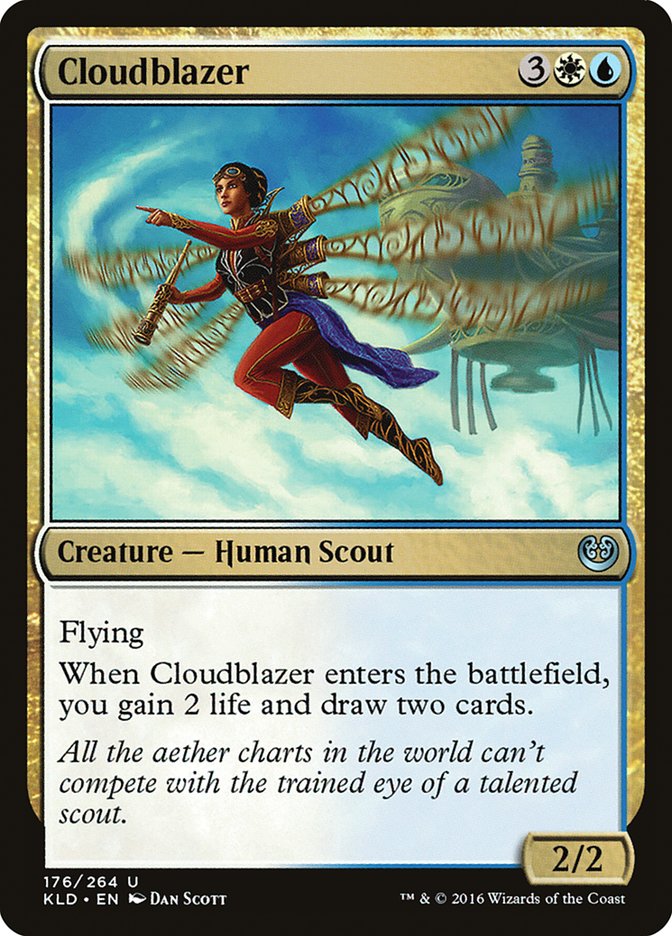I didn’t go to #SCGCOL. The only Standard I had played with Aether Revolt prior to #SCGRICH was during the VS Series against Brad Nelson and Michael Majors, so my knowledge on the format was somewhat limited. I had brewed a few U/R decks, some control and some not, but nothing I had brewed came very close to the strength of Brennan DeCandio’s B/G Delirium (Aggro) deck.
Creatures (25)
- 4 Mindwrack Demon
- 2 Tireless Tracker
- 4 Grim Flayer
- 4 Verdurous Gearhulk
- 4 Winding Constrictor
- 3 Rishkar, Peema Renegade
- 4 Walking Ballista
Lands (23)
Spells (12)

When I first saw it, I was surprised how advanced it looked on paper. It had answers to a lot of curveballs the format could throw at it. It had an extremely high ceiling on aggressive starts. And it even had the ability to morph into a much more controlling strategy.
As I wrote last week, I thought the deck was very good, and so for #SCGRICH I ended up playing 73 of the original 75, with two card changes at the behest of DeCandio himself. Since he was rooming with us for the event, we were able to hammer out the changes together on Friday night. Personally, I wanted to change a few more cards than that, as I expected many of the Jeskai and Four-Color Saheeli decks to adapt. Fumigate was a very big concern, and my desire was to add a few copies of Liliana, the Last Hope to the maindeck, as well as a few more planeswalkers in the sideboard. But after listening to his reasoning, I decided to follow his lead. He only lost one match the week before, after all.
So that was it. I had my deck registered and ready to go.
Creatures (25)
- 4 Mindwrack Demon
- 2 Tireless Tracker
- 4 Grim Flayer
- 4 Verdurous Gearhulk
- 4 Winding Constrictor
- 3 Rishkar, Peema Renegade
- 4 Walking Ballista
Lands (23)
Spells (12)

It was still pretty early, so we decided to go have some fun in Richmond. Fast forward to the next morning, and all I could think about is how much my head hurt. Well, that and if I should just make the changes to the deck that I had wanted to make in the first place. To the Slaughter didn’t seem all that impressive to me, but DeCandio said it was one of his best-performing cards. Lost Legacy also seemed pretty bad, but it was one of the only ways for the deck to aggressively interact with both the Saheeli Rai combo and Ulamog, the Ceaseless Hunger from the Aetherworks Marvel decks.
Again, I conceded. My lack of experience in the new format and specifically the B/G deck gave me pause. Changing a bunch of cards without playing any games is something I usually instruct others not to do. So why would I do it myself? I wasn’t pulling information from some deep knowledge of the format. With the new set and the bans coming into play, most of the stuff I’ve known about Standard in the last year became outdated.
After starting 5-0, I lost my next three matches in a row. One was to DeCandio himself in a 75-card mirror. Another was to Kevin Jones playing the boogeyman of the format: Jeskai Saheeli. The last came in a mirror match where I failed to draw a combination of lands and spells. After being 5-3, I desperately wanted to leave. I pestered Tom, who was 6-2, about whether or not we could just go home if he lost the last round. To my disappointment, he convinced me that dropping from a tournament when you were still in contention to win is a slippery slope. Plus, I had skipped the previous weekend’s Standard Open for no real reason.
Again, I conceded. After winning my final round on Day 1, I went back to the hotel and ordered some food, and eventually went to sleep. The next morning, I knew that my back was against the wall. But as luck would have it, I ended up squeaking into the Top 8 after basically giving up. Sometimes life can be funny. The Top 8 didn’t go so well, with me making a bad judgment call in the first game and getting obliterated in the second game by Jeskai Saheeli. Me getting knocked out by Torrential Gearhulk while I cast Winding Constrictor? The irony was not lost on me.
But with a full tournament under my belt, I learned a lot about Standard, and hopefully I can pass that knowledge on to you. In the tournament, my opponents played the following decks:
Four-Color Saheeli: 2
Jeskai Saheeli: 4
B/G Aggro/Delirium: 6
Jeskai Metalwork Colossus: 1
As you can see, the bulk of my matches were against Saheeli Rai and B/G in various forms. And during each of those matchups, I started to pick up little bits and pieces of information about my deck, as well as how I should operate against their deck. I didn’t feel like my version of B/G Delirium was significantly advantaged against any of my opponents, and I quickly learned what I wanted to change about my deck. I also ran into some pretty spicy cards from my opponents, giving me a better idea on how I would build their deck if I decided to switch.
Here’s the bulk of what I learned at #SCGRICH.
B/G Delirium/Aggro
Rishkar, Peema Renegade is overrated. I assembled the dream opener of Winding Constrictor plus Rishkar, Peema Renegade exactly twice in thirteen matches of play, and the Snake never made it to the combat step (and my +1/+1 counters were not doubled).
I sided out Rishkar and Grim Flayer in the mirror once I understood what was most important, while siding in more removal and planeswalkers.
Ob Nixilis Reignited is the best thing you can do in the mirror, so I’d recommend adding a second copy.
I singlehandedly lost to an Ob Nixilis Reignited from Brennan DeCandio when we played on camera in the sixth round, as I was unable to draw one of my five answers for it. The card draw and sheer threat of killing any big creature I played was more than enough to turn the tide in his favor. The second copy could hurt your curve a bit, but the effect is more than worth it. Drawing one is big, and drawing the second if your opponent is lucky enough to kill the first one is likely too much to handle.
The mirror is all about attrition. You need to use every card you draw to the best of its ability. I regularly waited until I had six or eight mana to cast Walking Ballista and made sure it had a target to kill if I was afraid of a removal spell.
After sideboarding, you have a lot more answers to the big baddies that they’re going slam down, so it is much more difficult to get overwhelmed. Fatal Push was a big part of that, which is why I think cutting Grim Flayer after sideboarding is more important than anything else. Rishkar, Peema Renegade does grant you the ability to ramp into bigger cards more quickly, but it isn’t all that impressive once you both have access to so much removal. Ramping isn’t a priority anymore.
You could make the case that having enough threats to overload their removal is important, but the truth is that you have to find the right balance between threats and answers, and those two threats are the least likely to give you an advantage, especially when you’re on the draw.
I felt like the deck needed another two-drop creature. I had to pitch a lot of hands that didn’t have a play until the third or fourth turn, which led me to believe that the deck didn’t have enough early pressure. My top pick at the moment is Scrapheap Scrounger. Not only is it another artifact creature, giving you two points of delirium, but it can also combo with Rishkar, Peema Renegade to kill a Saheeli Rai on the draw. While Scrapheap Scrounger doesn’t let you switch gears all that easily into a controlling deck after sideboard, it does give you a better threat against Jeskai Saheeli. Fumigate is a real problem, so more cards that fight it is important.
Mindwrack Demon was mediocre at best. I’m sure it would be much better in versions that play Servant of the Conduit and/or Blossoming Defense. I found myself missing on delirium after casting it quite a bit, which can be a liability in the mirror. It is big and pairs nicely with Verdurous Gearhulk, but it looks rather embarrassing when it dies without accruing value. I could see an argument for playing two or three if you’re going to try out Scrapheap Scrounger, but I was not impressed by it.
Lost Legacy was garbage. I should have trusted my gut and played Transgress the Mind or even Pick the Brain instead. Both would have been better than Lost Legacy. The joke is that Saheeli Rai doesn’t need the combo to beat you. They can just cast Torrential Gearhulk and copy it a bunch of times. As I’ve written before, Torrential Gearhulk plus an instant is just as much of a game-winning combo as Saheeli Rai and Felidar Guardian. The fact that Lost Legacy can’t hit Aetherworks Marvel, Torrential Gearhulk, or any other combo-based artifact is a complete joke. Get it out of the deck.
The B/G Delirium deck is nothing special. I expect it to see a reasonable amount of play at the Pro Tour, but I don’t love it. The matchup against Jeskai Saheeli is not great. I went 2-2 against it, but even when I won, it didn’t always feel like I should have. They have plenty of answers to your threats, and the uptick in popularity of the backbreaking Fumigate left me vulnerable. Scrapheap Scrounger could change that, though.
Jeskai Saheeli
This deck is really good. I have never felt so terrified of tapping out in my entire life. The threat of the combo is almost as good as the combo itself. The trick is figuring out how to utilize each of the combo pieces without the other. Saheeli Rai and Felidar Guardian are both great for blinking/copying Torrential Gearhulk, but I was immensely impressed by Oath of Chandra.
The ability to kill a creature in the early turns was nice, but to turn Felidar Guardian into Flametongue Kavu was another mode entirely. The tempo gained by this play was too much for me to overcome on multiple occasions. I’d recommend two copies in the maindeck. You need to balance having enough targets for Felidar Guardian and instants for Torrential Gearhulk.
Oath of Jace is probably bad. It might be fine in the first game to help assemble the combo more consistently, but I never felt like my opponent was gaining any sort of advantage from casting it, or even blinking it with Felidar Guardian. I would like to see it removed from the deck in favor of some other form of card advantage/selection. As to what the might be, I don’t know at the moment. I’d have to play with the deck some myself to make that call.
If you want to beat this deck with B/G Delirium/Aggro, you need to be able to deal four damage to Saheeli Rai on the draw on your turn 3.
Scrounger plus other stuff might help with that, but I think even playing Gnarlwood Dryad might be fine. I just want more early threats. Getting delirium was exceptionally difficult to do, though. The other option is to just play Blossoming Defense, which I think lost a lot of value from the banning of Smuggler’s Copter. However, it might be time for it to make a comeback, and especially so if you want to keep playing big, dumb monsters like Mindwrack Demon.
If you have the option to kill a Torrential Gearhulk during combat with Grasp of Darkness, leaving yourself vulnerable to the combo, remember that any half of the combo plus Torrential Gearhulk will likely win them the game anyway. I figured that out a turn too late in the Top 8. Plus, the odds of them having Dispel alongside the combo is much higher after they’ve resolved Glimmer of Genius and a subsequent Torrential Gearhulk. Just try to pay close attention to how they scry.
This matchup will likely get better for B/G Delirium/Aggro if you play more hand disruption. Having perfect information is a big deal, but Lost Legacy doesn’t do enough. Pick the Brain is okay, but I think Transgress is just the better option for curve reasons. Taking away their combo piece can allow you to tap out with a higher frequency, even if it does cost you two mana in the early turns. A lot of their draws will also rely on resolving Torrential Gearhulk, both for playing defense and digging for the combo. If you’re able to strip them of Torrential Gearhulk, you can only lose the game at the hands of the combo.
I was never able to “get” someone with To the Slaughter in this matchup. I did like having access to more removal, though. Murder might be better over some number of the To the Slaughter, but that could leave you vulnerable to the side of their deck that tries to control you with planeswalkers.
Four-Color Saheeli
This deck seemed fine, but I think it is worse than Jeskai. A bunch of small creatures can’t make up for the loss in power level of Glimmer of Genius and Torrential Gearhulk. In actuality, these decks are not very much alike. Jeskai Saheeli functions like a control deck, where this one is more of a midrange strategy. The individual cards are a bit stronger and provide you with some card advantage, but it seemed much weaker than being a dedicated control deck with a combo finish.
But Four-Color Saheeli does give you more options for making both halves of the Saheeli combo solid without the other piece. Blinking or copying Rogue Refiner or even Cloudblazer is a big deal, but you also get to play cards like Oath of Nissa to find your combo more easily. I’m surprised at how few copies of Dispel these versions played in the maindeck. Assembling the combo was easy, but protecting it was a lot more difficult.
I like the idea of Panharmonicon to give you more ways to “go infinite.” Two copies of Felidar Guardian and a Panharmonicon means arbitrarily large mana, and any other good permanent to blink will allow you to draw your deck and assemble your arbitrarily large attack combo up to four times. You can also just out-pace your opponent on card advantage with Panharmonicon quite easily. Having Cloudblazer or Rogue Refiner drawing extra cards will allow you to continue applying pressure, either with more creatures or more combo pieces.
I don’t know if I’d ever play this version over Jeskai Saheeli, but I suppose we’ll just have to wait and see what people come up with at the Pro Tour.
The Rest
We’ve got to be missing something.
The sheer power level of this format is staggering, even with three of the biggest offenders banned. B/R Zombies seems like it could be well-positioned against both Jeskai Saheeli and B/G Delirium, but it has issues with consistency. Paradox Engine seems far too degenerate for no one to be talking about it. Even Metallic Mimic plus Animation Module is too powerful to ignore.
In the past few years, we’ve seen a lot of innovation coming out of the Pro Tour after a rather anti-climactic start to a new Standard format. While those decks don’t always necessarily make it big after the Pro Tour, the splash they make is certainly something to behold. I mean, really, everyone but Ali Aintrazi failed to figure out just how good Emrakul, the Promised End was until the Pro Tour showed us what it could really do.
I feel like the experience I had at #SCGRICH will be nothing like the experience I have after #PTAER. There is too much unexplored territory. Will B/G Delirium and Jeskai Saheeli show up in large numbers to the tournament? Probably. But I’d bet against either of those decks winning the tournament, even with their dominant performances over the last two weeks on the SCG Tour.
My money is on the field.


